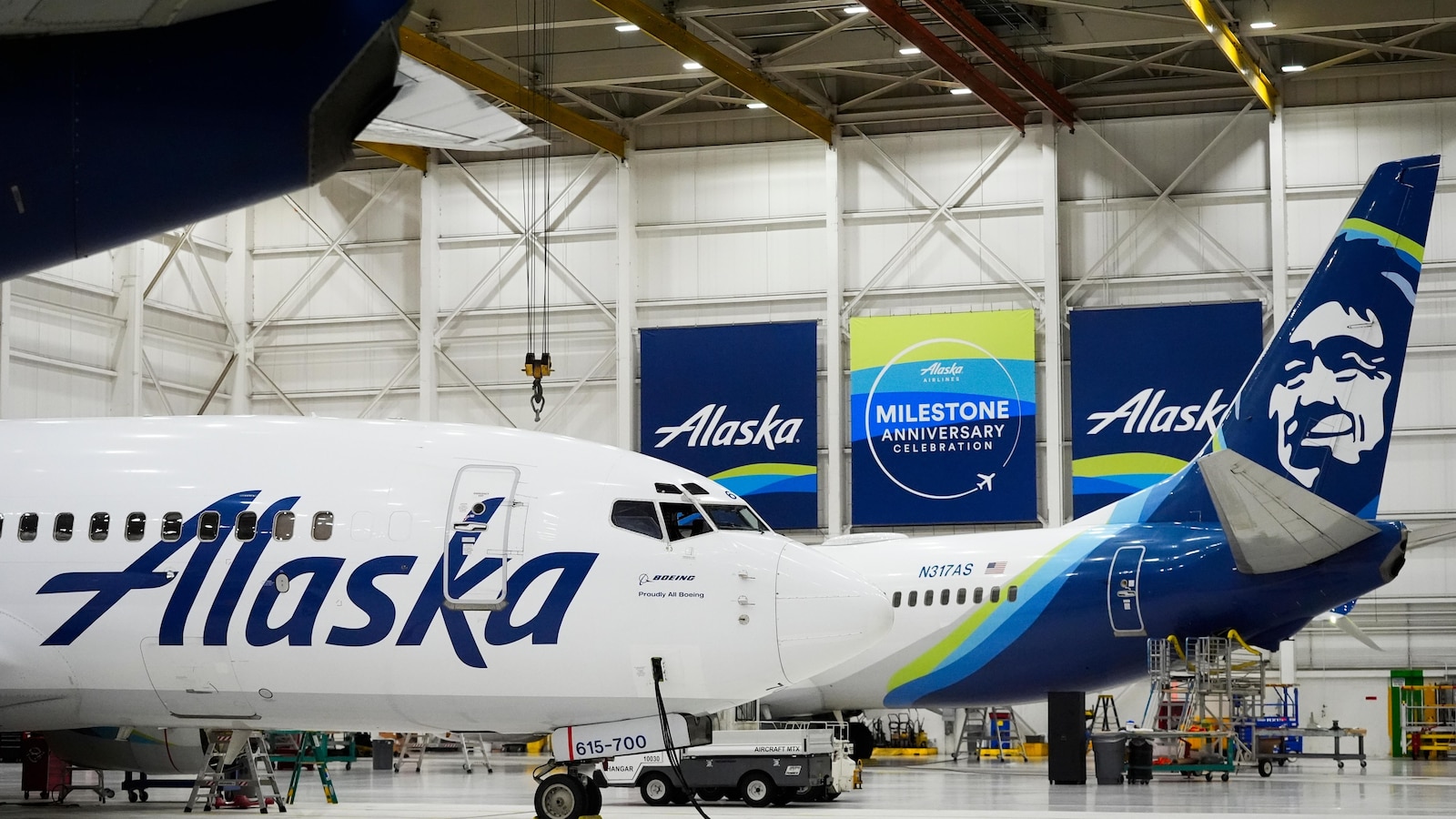
SEATTLE — Boeing has acknowledged in a letter to Congress that it cannot find records for work done on a door panel that blew out on an Alaska Airlines flight over Oregon two months ago.
“We have looked extensively and have not found any such documentation,” Ziad Ojakli, Boeing executive vice president and chief government lobbyist, wrote to Sen. Maria Cantwell on Friday.
The company said its “working hypothesis” was that the records about the panel’s removal and reinstallation on the 737 MAX final assembly line in Renton, Washington, were never created, even though Boeing’s systems required it.
The letter, reported earlier by The Seattle Times, followed a contentious Senate committee hearing Wednesday in which Boeing and the National Transportation Safety Board argued over whether the company had cooperated with investigators.
The safety board’s chair, Jennifer Homendy, testified that for two months Boeing repeatedly refused to identify employees who work on door panels on Boeing 737s and failed to provide documentation about a repair job that included removing and reinstalling the door panel.
“It’s absurd that two months later we don’t have that,” Homendy said. “Without that information, that raises concerns about quality assurance, quality management, safety management systems” at Boeing.
Cantwell, a Democrat from Washington, demanded a response from Boeing within 48 hours.
Shortly after the Senate hearing, Boeing said it had given the NTSB the names of all employees who work on 737 doors — and had previously shared some of them with investigators.
In the letter, Boeing said it had already made clear to the safety board that it couldn’t find the documentation. Until the hearing, it said, “Boeing was not aware of any complaints or concerns about a lack of collaboration.”
Boeing has been under increasing scrutiny since the Jan. 5 incident in which a panel that plugged a space left for an extra emergency door blew off an Alaska Airlines Max 9. Pilots were able to land safely, and there were no injuries.
In a preliminary report last month, the NTSB said four bolts that help keep the door plug in place were missing after the panel was removed so workers could repair nearby damaged rivets last September. The rivet repairs were done by contractors working for Boeing supplier Spirit AeroSystems, but the NTSB still does not know who removed and replaced the door panel, Homendy said Wednesday.
The Federal Aviation Administration recently gave Boeing 90 days to say how it will respond to quality-control issues raised by the agency and a panel of industry and government experts. The panel found problems in Boeing’s safety culture despite improvements made after two Max 8 jets crashed in 2018 and 2019, killing 346 people.
Boeing, one of the world’s leading aircraft manufacturers, is facing scrutiny after it was unable to locate work records related to a door panel incident on an Alaska Airlines flight. The incident, which occurred on a Boeing 737-900ER aircraft, involved a door panel detaching from the aircraft during a flight from San Francisco to Seattle.
The missing work records have raised concerns about Boeing’s maintenance and quality control processes, as well as the safety of its aircraft. The incident has also sparked questions about the company’s ability to track and document maintenance work on its planes.
According to reports, the door panel incident occurred shortly after takeoff when passengers heard a loud noise and saw the panel partially detach from the aircraft. The flight crew quickly notified air traffic control and safely landed the plane in Seattle. Fortunately, there were no injuries reported among the passengers or crew.
In response to the incident, Boeing launched an investigation to determine the cause of the door panel detachment. However, the company was unable to locate the work records related to the maintenance of the door panel on the aircraft in question. This lack of documentation has raised concerns about Boeing’s record-keeping practices and its ability to ensure the safety and reliability of its aircraft.
Alaska Airlines, the operator of the affected flight, has also expressed concern over the missing work records. The airline has stated that it is working closely with Boeing to investigate the incident and ensure that appropriate measures are taken to prevent similar incidents in the future.
The Federal Aviation Administration (FAA) has been notified of the incident and is conducting its own investigation into the matter. The FAA has stated that it takes all safety incidents seriously and will work with Boeing and Alaska Airlines to address any safety concerns that may arise from this incident.
In light of this incident, aviation experts are calling for greater transparency and accountability in the aircraft maintenance industry. They argue that proper documentation and record-keeping are essential for ensuring the safety and airworthiness of commercial aircraft.
Boeing has stated that it is committed to working with regulators, airlines, and other stakeholders to address any concerns related to this incident. The company has also pledged to review its maintenance processes and documentation practices to prevent similar incidents from occurring in the future.
As investigations into the door panel incident continue, passengers can rest assured that safety remains a top priority for Boeing, Alaska Airlines, and the aviation industry as a whole. However, this incident serves as a reminder of the importance of thorough maintenance practices and proper record-keeping in ensuring the safety of air travel.


